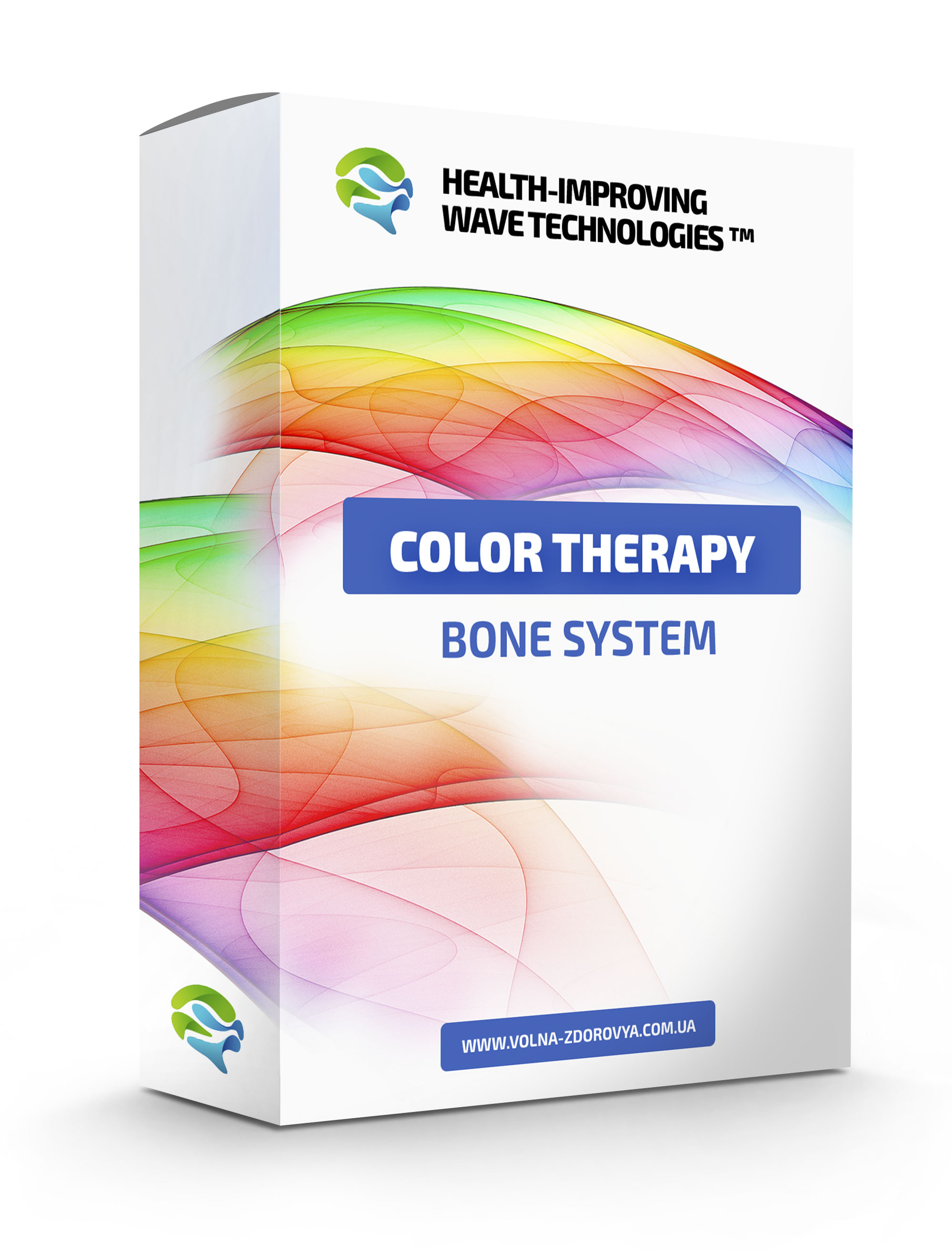Color therapy for bone system
Sold 0
Refunds 0
Good feedbacks 0
Bad feedbacks 0
Color therapy to strengthen bones, joints, ligaments, discs and vertebrae.
The human skeletal system is, in fact, a framework for the entire body, and the organs of the skeletal system are, as it were, individual elements of this framework. These include bones, joints, cartilage, ligaments, and they all form the human skeleton.
If we take the brick wall as an analogy, then we can imagine that the bones are bricks that are connected by cement — connective tissue. The human bone system has about 206 bones of various shapes and sizes. Their role is not only to create a support, a kind of skeleton, but also in blood formation and accumulation of various minerals. Bones are the same living tissue as, for example, skin tissue, and can also be destroyed or restored.
The principle of color therapy.
Body organs vibrate at different frequencies. The body has many different colors and shades, and they are all in a certain balance.
Various stresses, tensions, psychological trauma upset the vibrations of the human body, so the system becomes unbalanced and the body becomes ill. If the balance is disturbed, the body becomes ill. Since ancient times, such methods as setting doses of color through various sources have been known. For example, stones that can be recommended due to the emission of color by them. Or, for example, light transmitted through colored water or even juice. Also use special colored glass. We use computer correction of body problems (personality traits or relationships with other people). This happens as follows: Information on the patient's sensory systems (vision) through the monitor of a personal computer is transmitted in the form of certain color shades, flashing with a certain frequency. Also, to enhance the effect, we can use music that affects certain organs or systems. Binaural beats can also be used as brain stimulation. In these cases, we recommend to watch color therapy with headphones.
The color matrix of therapy always consists of three components: altered brain functions, an altered organ, and changes in the body. All color therapy comes in a triad with complementary shades.
One session of correction takes only 7-11 minutes, the daily dose is not more than 4 sessions a day, dividing them by time (2-2.5 hours between color therapy). The course ranges from 3 months to several years.
Colors for Color Therapy are based on the color perception of a person in problem periods of life, and the correction is based on the biological response of the brain to the wave effect in the form of a color flickering with a certain frequency.
Below are the minimum system requirements:
processor with a frequency of 2 GHz and above;
1 GB of RAM;
Up to 1 GB of free hard disk space;
Screen resolution up to 1920x1200
DirectX 9.0c or higher;
Windows XP, Windows Vista, Windows 7, Windows 8 or Windows 10.
The human skeletal system is, in fact, a framework for the entire body, and the organs of the skeletal system are, as it were, individual elements of this framework. These include bones, joints, cartilage, ligaments, and they all form the human skeleton.
If we take the brick wall as an analogy, then we can imagine that the bones are bricks that are connected by cement — connective tissue. The human bone system has about 206 bones of various shapes and sizes. Their role is not only to create a support, a kind of skeleton, but also in blood formation and accumulation of various minerals. Bones are the same living tissue as, for example, skin tissue, and can also be destroyed or restored.
The principle of color therapy.
Body organs vibrate at different frequencies. The body has many different colors and shades, and they are all in a certain balance.
Various stresses, tensions, psychological trauma upset the vibrations of the human body, so the system becomes unbalanced and the body becomes ill. If the balance is disturbed, the body becomes ill. Since ancient times, such methods as setting doses of color through various sources have been known. For example, stones that can be recommended due to the emission of color by them. Or, for example, light transmitted through colored water or even juice. Also use special colored glass. We use computer correction of body problems (personality traits or relationships with other people). This happens as follows: Information on the patient's sensory systems (vision) through the monitor of a personal computer is transmitted in the form of certain color shades, flashing with a certain frequency. Also, to enhance the effect, we can use music that affects certain organs or systems. Binaural beats can also be used as brain stimulation. In these cases, we recommend to watch color therapy with headphones.
The color matrix of therapy always consists of three components: altered brain functions, an altered organ, and changes in the body. All color therapy comes in a triad with complementary shades.
One session of correction takes only 7-11 minutes, the daily dose is not more than 4 sessions a day, dividing them by time (2-2.5 hours between color therapy). The course ranges from 3 months to several years.
Colors for Color Therapy are based on the color perception of a person in problem periods of life, and the correction is based on the biological response of the brain to the wave effect in the form of a color flickering with a certain frequency.
Below are the minimum system requirements:
processor with a frequency of 2 GHz and above;
1 GB of RAM;
Up to 1 GB of free hard disk space;
Screen resolution up to 1920x1200
DirectX 9.0c or higher;
Windows XP, Windows Vista, Windows 7, Windows 8 or Windows 10.

